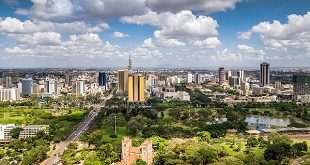
By Onghwens Kisangala
It may be 8:00am or 6:00pm, at either hour traffic flow in Kampala city will be at the peak. The movement of vehicles, motor-bikes, commonly known as bods bodas can be a nightmare as many passengers jump off to move faster on foot. Is it dropping a child at or picking one from school, or is it rushing to and from office? It becomes more pathetic for emergencies such as when an ambulance is rushing a patient to hospital for urgent treatment. The number of vehicles and motorcycles competing for small on our narrow city roads is overwhelming. The bad situation is made worse by the boda bodas who know no traffic rule. While the number of vehicles and boda bodas increase every other day, the width and number of the streets remain constant. So how many more cars does it take for traffic on Kampala streets to burst the roads?
As new cars are put on the road every day, the traffic become increasingly pathetic. This suggests that at some time soon traffic flow in the city will go on a standstill. Is this where we are headed?
Cypriano Okello, a transport economist with the Ministry of Works and Transport says that will not happen. We are not going to reach that point. When we see that we going there, we just introduce high road tolls that drive many motorists out of the road, he says.

He says the ministry has designed a master plan which will be implemented this financial year. The master plan came out of a study commissioned by the ministry on the strategy for transportation development in the country.
The study showed that the traffic growth rates between 2001 and 2008 present a major challenge for the future. Many roads will have very high flows before 2023, implying the need for four or more lanes. Such roads include Nakawa-Mukono, Kibuye-Entebbe Airport, Kibuye-Busega and Kalerwe-Kawempe, Okello said.
Information obtained from Uganda Revenue Authority (URA) shows that the number of cars registered in 2007/08 increased by 30% to 30,669 in 2007/08 from23,552 the previous 2006/07 year. Alongside this was 29% increase of motorcycles from 43,743 in 2006/07 to 56,692 in 2007/08. At this rate, the annual car and motorcycle number will double in just four years.
A participant observation showed that when drivers and riders are trapped in a static traffic jam (bumper-to-bumper), there are about 68 cars on two lanes moving in one direction in about every 100 metres of the jam.
A good example is Bombo Road from Wandegeya through Kampala Road to Jinja Road at Spear Motors. There are three free-flow sections on this stretch. The first section is between and Wandegeya to KPC. From here the traffic jam up to Bank of Uganda before it relaxes at the next free-flow section. This free-flow stops at Nandos. From here, the next jam runs up to Jinja Road traffic lights where motorists enter the 3rd and longest free-flow up to Lugogo UMA Show Ground before the Nakawa traffic lights along the same road. From UMA the traffic jam peaks especially in the evenings. The reverse journey is equally tense but with intervals of jam and free flows in some cases.
In the mix of a jam are reckless boda-boda riders maneuvering on what former Kampala Extra Police Spokesman Simeo Nsubuga once described as their own traffic rules. They dont stop until they have reached the traffic lights or police directing turns of traffic flow. At one point the city council barred them from the city centre but police did not enforce the bylaw due to political interference. The annual average growth of boda-bodas of about 20% could make traffic flow in the city unmanageable.
The current situation suggests the traffic jam will get out of control much earlier than 2023 when government anticipates the climax. Construction of the Kampala Northern Bypass, which was originally scheduled to last 30 months, is not yet complete since the EU Head of Delegation Ambassador Sigurd Illing commissioned it on May 25, 2004. The National Transport Master Plan, which includes the Transport Master Plan for the Greater Kampala Metropolitan Area which should have started in July last year, is meant to be a 15- year project but is already one year behind schedule.
 The Independent Uganda: You get the Truth we Pay the Price
The Independent Uganda: You get the Truth we Pay the Price



